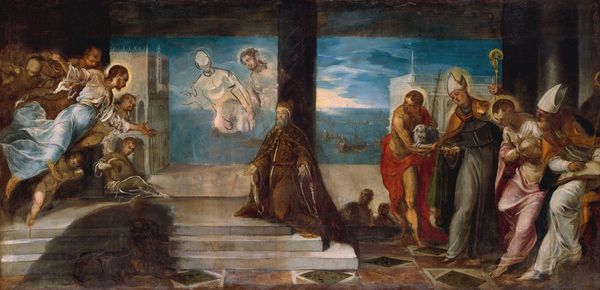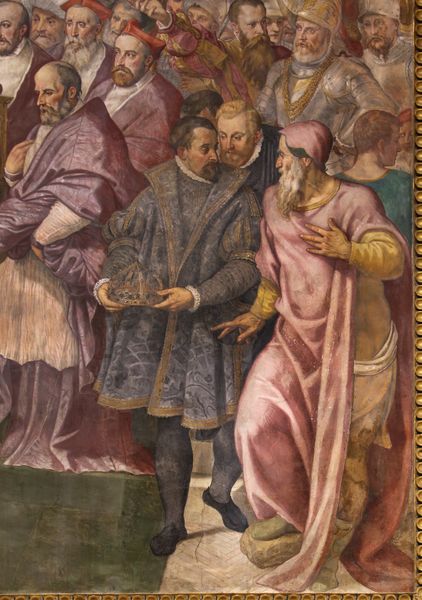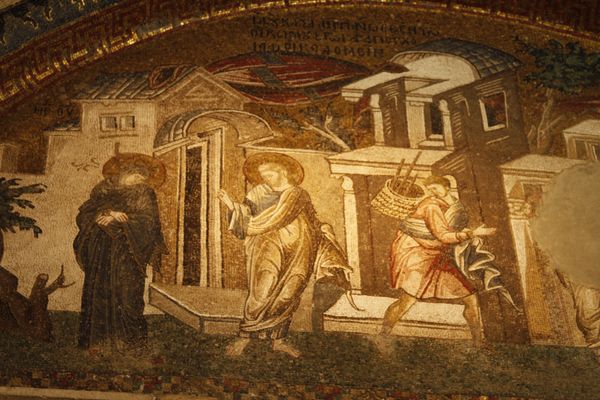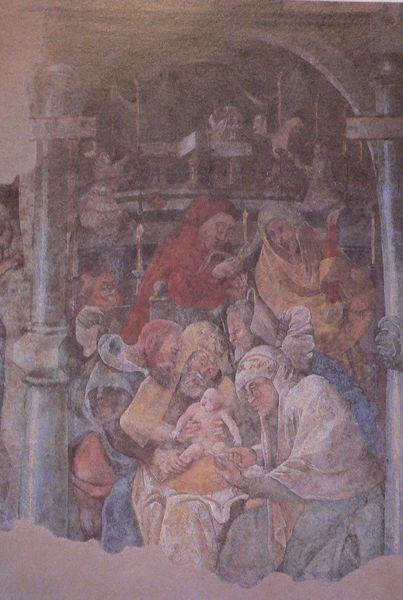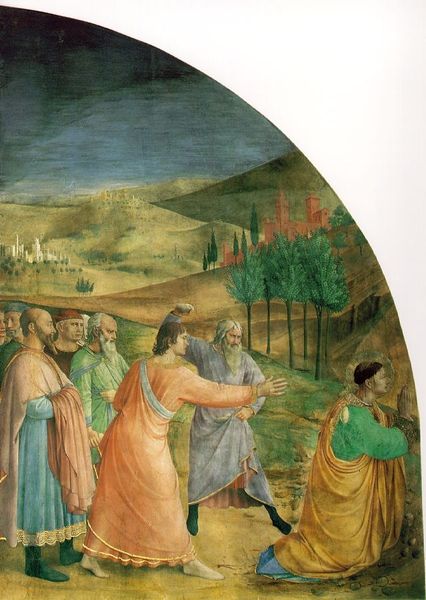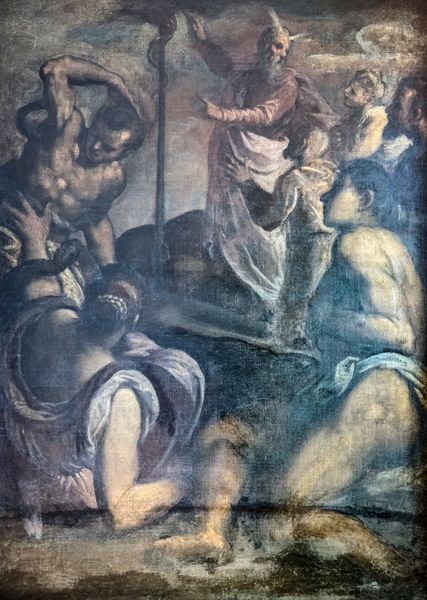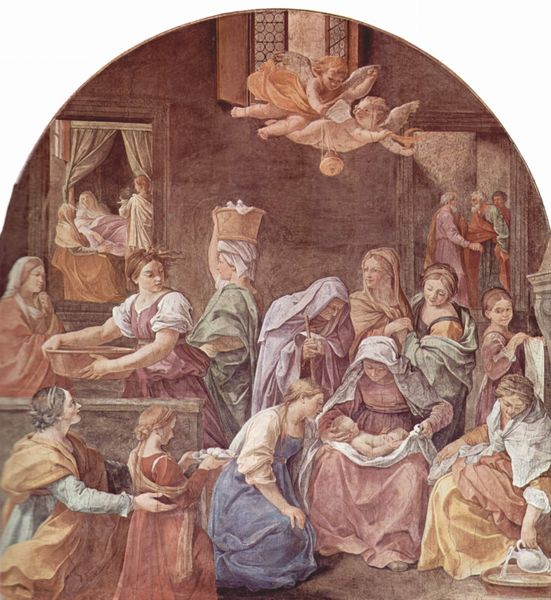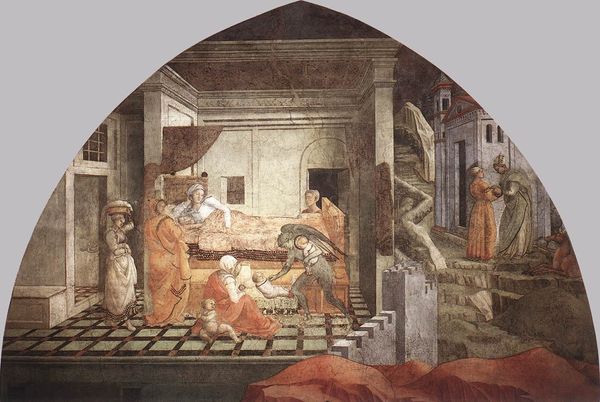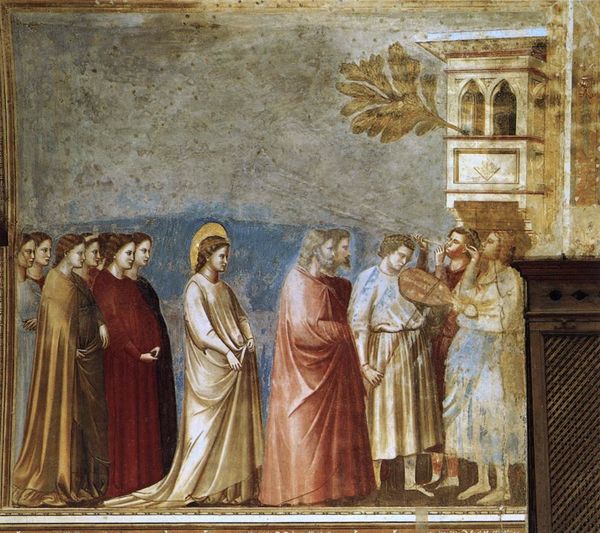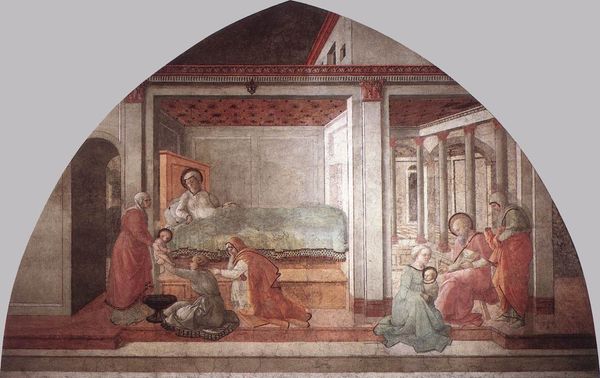
fresco
#
narrative-art
#
figuration
#
fresco
#
christianity
#
history-painting
#
italian-renaissance
#
early-renaissance
Copyright: Public domain
Filippo Lippi painted "The Beheading of John the Baptist" with fresco. Observe how the architectural elements, like the patterned floor and the sharp corner, structure the narrative space into distinct planes. The artist utilizes a muted color palette, dominated by earthy tones, which creates a somber and reflective atmosphere. The composition is divided, with the left side portraying the brutal act of beheading and the right side showing Salome presenting the head, attended by onlookers. Lippi masterfully employs linear perspective to create depth, drawing our eyes from the foreground to the background, where shadowy figures lurk. Consider the contrast between the active executioner and the passive Salome. These juxtapositions destabilize conventional interpretations of power and victimhood. The artist uses the formal elements to create a complex interplay of morality and spectacle. The formal arrangement—the spatial divisions, muted tones, and perspectival lines—invites us to question the underlying structures of justice, power, and representation within this scene. This is not just a historical depiction but an invitation to contemplate the darker aspects of human nature.
Comments
No comments
Be the first to comment and join the conversation on the ultimate creative platform.
